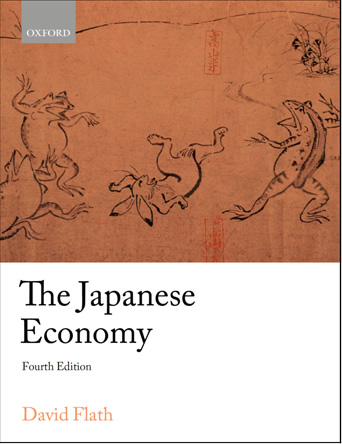Prof. David Flath
David Flath, born in Dallas, Texas (1951), PhD in economics UCLA (1976), is Professor Emeritus of North Carolina State University, where he was employed from 1976 to 2008. After moving to Japan, he was an Adjunct Professor of Economics at the Osaka University Institute of Social and Economic Research (2009-13) and then a Professor of Economics at Ritsumeikan University (2013-2022). Before that he had beena Visiting Professor of Economics at Kyoto University (2001-2) and at Osaka University (1995-6).Flath is the author of The Japanese Economy, Oxford University Press (now in its 4th edition, 2022), and numerous academic articles on the Japanese economy and on industrial organization.
His Japan-related research has been supported by an Abe Fellowship and by grants from the Japan Society for the Promotion of Science, the Social Science Research Council, and the Japan-US Friendship Commission.His early forays into Japan were supported by the North Carolina Japan Center and by the Fulbright Program.
Japanese Newspaper Publishers’ Response to the Advent of Internet Advertising
David Flath
Professor Emeritus, North Carolina State University
In 2010, while employed as an adjunct professor of economics at Osaka University I applied for and received a generous three-year grant from the Japan Society for the Promotion of Science, for analysis of two-sided markets, focusing on the Japanese newspaper industry. Thus began a ten-year exploration by me of Japanese newspaper publishers’ pricing of subscriptions and print-ads, and how these prices and newspaper publishers’ sales and profits were affected by the ongoing rapid increase in internet advertising. In this talk I will explain what I learned from all this about the changing fortunes of Japanese newspaper publishers, and what I learned about carrying out an ambitious research program while working at Japanese universities.
In 2017, Japanese newspaper print advertising revenue, adjusted for inflation, was only half as great as at its 1997 peak. Japanese newspaper circulation also peaked in 1997, and in the two decades following that fell by about one fifth. Underlying these changes in Japanese newspaper revenue and circulation was an 83% decrease in the demand for newspaper print-ads from 1997 to 2017, and a 26% decrease in demand for newspaper subscriptions, measured at the 1997 inflation-adjusted prices of ads and subscriptions. The fall in demand for newspaper ads was directly caused by the rise of the internet and proliferation of internet advertising. The newspaper publishers responded to this shock by lowering their prices of print ads and raising their prices of subscriptions. It was the best they could do in response to a tough situation. The Japanese newspaper industry annual economic profit fell from 4845 100-millions of 2005 yen in 1997 to 1123 100-millions of 2005 yen in 2017. That was a 77 percent decrease but left profit still positive. Very few daily newspapers in Japan have shut down in the last twenty-five years.
My research was supported by Japan Society for the Promotion of Science, Grant-in-Aid for Scientific Research (C), grant no. 22530227, 2010-2013, focusing on the Japanese newspaper industry. It resulted in three published papers:
David Flath, “Japanese Newspapers,” International Journal of Economic Policy Studies, 15, 2021, pp. 257–299.
David Flath, “Second Degree Price Discrimination by Japanese Newspapers,” Japan and the World Economy,2017, vol. 44, pp. 14-25.
David Flath, “Resale Price Maintenance by Japanese Newspapers,” Japanese Economic Review,December 2016, vol. 67, no. 4, pp. 441-473.










